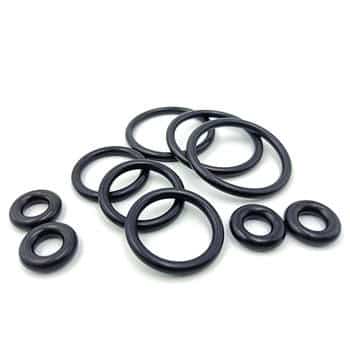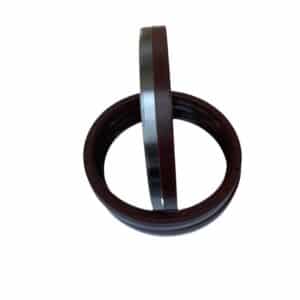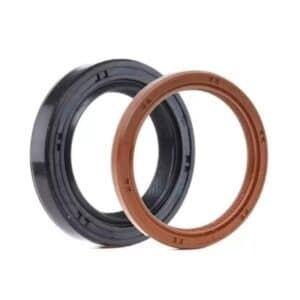Choosing between Buna-N and EPDM O-rings is a critical decision for system performance, durability, and cost-efficiency.
Buna-N works best for oil-based systems, while EPDM excels in steam, water, and outdoor environments.

Keep reading for a complete material comparison with real-world examples, performance charts, and selection guidance.
What Are Buna-N and EPDM O-Rings Commonly Used For?
Material selection matters. Different sealing environments require different rubber compositions.
Buna-N fits oil and fuel systems, while EPDM is ideal for heat, weather, and steam exposure.

Buna-N (NBR) offers excellent resistance to petroleum products and is widely used in automotive and hydraulic applications. EPDM, on the other hand, resists steam, heat, UV, and ozone—perfect for outdoor, hot water, or drinking water systems. Here's how they compare:
| সম্পত্তি | বুনা-এন | ইপিডিএম |
|---|---|---|
| তাপমাত্রার পরিসর | -40°C to 121°C | -51°C to 150°C (204°C for steam) |
| তেল প্রতিরোধ ক্ষমতা | চমৎকার | দরিদ্র |
| Steam Resistance | দরিদ্র | চমৎকার |
| UV/Ozone Resistance | মাঝারি | চমৎকার |
| খরচ | নিম্ন | উচ্চতর |
| সাধারণ ব্যবহার | Engine and fuel systems | Hot water or steam applications |
Which O-Ring Material Is Better for High Temperature Use?
When high temperatures are involved, EPDM is the superior choice.
It withstands up to 150°C normally and even higher in steam applications.
For example, in food processing equipment using steam valves, EPDM offers long-term resistance. You can find options on the EPDM ও-রিং পণ্য পৃষ্ঠা.
Is Buna-N More Suitable for Oil and Fuel Resistance?
Yes, Buna-N is specifically engineered to handle petroleum-based fluids.
It's a popular choice for motor oil, diesel, and hydraulic systems due to its stability in such environments.
Check out নাইট্রিল ও-রিং for affordable, oil-resistant sealing solutions.
Can EPDM O-Rings Handle Chloramine and Outdoor Exposure?
Absolutely. EPDM’s strength lies in its ability to resist UV, ozone, and chloramine.
This makes it ideal for drinking water systems, solar equipment, or outdoor valves.
Compared to a general-purpose O-Ring Seal, EPDM is built for more aggressive weather conditions.
How Do Costs Compare Between Buna-N and EPDM?
Buna-N is generally cheaper, making it suitable for cost-sensitive bulk applications.
However, EPDM often offers longer service life under harsh conditions, balancing the upfront cost with long-term value.
For multi-material options, consider the ও-রিং অ্যাসোর্টমেন্ট কিট.
How Should You Choose Between Buna-N and EPDM?
Ask yourself:
- What fluids or gases will be sealed?
- Will the seal face high temperatures or UV/ozone exposure?
- Is chloramine resistance required for potable water use?
- What’s your cost vs. durability priority?
When in doubt, contact us for tailored material recommendations based on your system specs.
উপসংহার
Choose Buna-N for oil-based applications; choose EPDM for water, heat, and weather resistance.
Find the Right Seal Material Without Guessing
📩 ইমেল: [email protected]
📞 হোয়াটসঅ্যাপ: +৮৬ ১৭৬২২৯৭৯৪৯৮
Related post
- এফকেএম বনাম এনবিআর ও-রিং তুলনা
- EPDM vs FKM Full Analysis
- Buna vs Nitrile: What's the Difference?
- Silicone vs Buna-N O-Ring Guide


